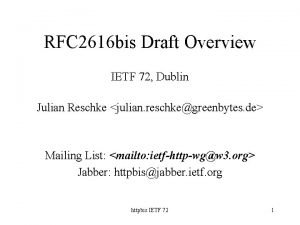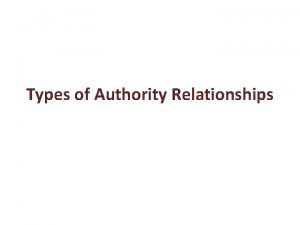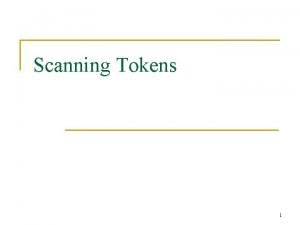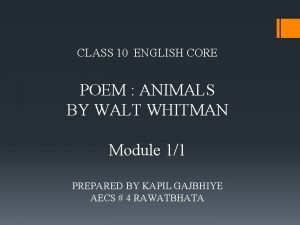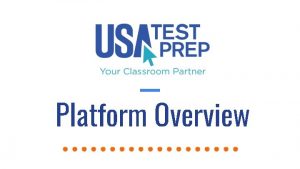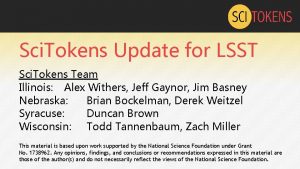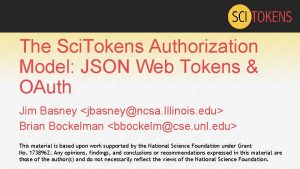Authority Tokens for ACME IETF 104 ACME WG







- Slides: 7

Authority Tokens for ACME IETF 104 ACME WG Jon & Chris - Praha - Mar 2019

Authority Token Challenge • Identified a generic need for authorities to provide tokens to a CA to respond to challenges – Surely any number of namespaces have authorities who could generate tokens • Inspired by the STIR case, but this could work for domains even – Requires the ACME server has some trust relationship with the authority • draft-ietf-acme-authority-token-03 – Framework for tokens that allow authorities trusted by the CA to attest client ownership of names • CA can then issue certs via ACME for particular names – Need some sort of typing mechanism for tokens, and a means to contact authorities

Example challenge "challenges": [ { "type": “example-01", "tkauth-type": “ex", "token-authority": "https: //authority. example. org/authz", "url": "https: //boulder. example. com/authz/asdf/0" "token": "Ilirfx. KKXAs. Htmz. K 29 Pj 8 A" } ] • The tkauth-type is governed by a registry – Specifies the syntax of the token • Today we only specify one initial registration, for JWT • It is the identifier type in the challenge that tells you what you are asking the authority to attest • The token-authority contains an optional URL – A hint for where clients can get a token – Not mandatory to follow, clients may already know where to get tokens from some out-of-band source

The “atc” tkauth-type • “atc” tkauth-type based on JWT – Described in the ACME TNAuthlist document • Example ACME response with a JWT – The JWT itself is the “ATC” payload in bold { "protected": base 64 url({ "alg": "ES 256", "kid": "https: //boulder. example. com/acme/reg/asdf", "nonce": "Q_s 3 MWoq. T 05 Trdk. M 2 MTDcw", "url": "https: //boulder. example. com/acme/authz/asdf/0" }), "payload": base 64 url({ ”atc": { “tktype”: … } }), "signature": "5 w. Ur. DI 3 e. Aa. V 4 wl 2 Rfj 3 a. C 0 Pp--XB 3 t 4 YYu. Ngacv_D 3 U" }

What’s New in AT -03 (and -02) • Fleshed out the REST interface for token acquisition – Cribbed from the ATIS specification • Better ATC structure • Introduced the concept of asking for a particular authority scope – Basically, you post the ATC object you will want the Token Authority to issue, scope is “tkvalue” • So, can you ask for a CA cert in ACME? – Why not? CSR with CA boolean set to true – We have a optional flag for that boolean in ATC • Added some minimal IANA Considerations

ATC Structure “atc": { "tktype": "Tn. Auth. List", "tkvalue": "F 83 n 2 a. . . avn 27 DN 3==", "fingerprint": "SHA 256 56: … 8: E 3” } • Optional element “ca”: true

Updates & To Do • To Do – Housekeeping in both drafts (Sec Cons, etc. ) • Should be ready for review and last call after another rev of each draft

